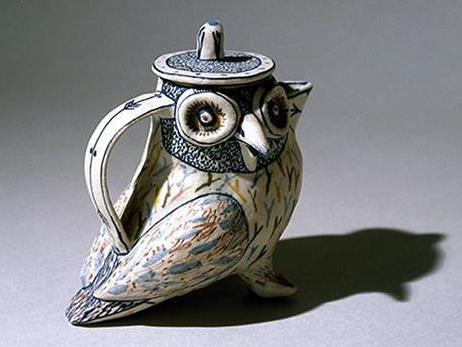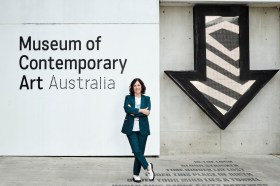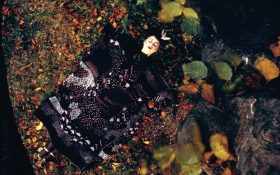Heide’s retrospective of ceramicist Stephen Benwell displays his work over three rooms, each showcasing a different phase in his 40-year career. The first room introduces the audience to his early work via quirky hand-built pots; the second room exhibits his large classically-shaped pots, which he uses as a canvas; and the third room explores his latest work: ceramic sculptures of men, inspired by Greek statues.
Benwell’s early, hand-built creations are certainly closer to sculptures than vessels. They are constructed in pieces rather than being thrown on a pottery wheel. Many take animal form, or the shape of everyday objects – such as a miniature chest of drawers, with drawers that open. They are eccentric and playful, appealing to a wide audience.
Many of the forms ostensibly have a functional purpose, particularly as teapots. These vessels are domestic and intimate in size, being no more than approximately 15cm high. They would delight any householder lucky enough to possess a Benwell owl or chicken teapot – although it didn’t look as though anything in the exhibition had ever been used for this purpose.
On these small vessels Benwell makes restrained use of colour – in strong contrast to his large pots, which are treated as a canvas. On these little creatures he mainly employs earth tones as well as dark blues and/or greens, with the ground allowed to show through as a neutral base. Their overall colour scheme and patterning gives them a naïve or even ancient appearance. It is of interest that Benwell cites Greek antiquities as an inspiration, which he developed via a study tour of Greece in 2008. This folk art or classical ceramics appearance suggested by the colour scheme is in complete contrast to their shapes, which are modern and quirky.
The painting is often rhythmic, in many cases using small dashed or repeated lines to trace the form. The forms are largely asymmetrical, but nonetheless balanced. For example on his owl teapot the shape of the handle echoes, in reverse, the shape of its breast.
The second room of the Heide exhibition showcases Benwell’s more classically-shaped pots. These are large, some over 50cm high. They give the impression of being shaped on the potter’s wheel but of having been further shaped by the maker, whose many hand-marks appear in the clay surface.
The primary role of the pots appears to be to serve as a ‘canvas’. The whiteness of the clay is allowed to show through, and forms a ground on which Benwell explores themes of masculinity, sexuality, landscape, and everyday life. Fluid line drawings of solitary nude males predominate, sitting, reclining, or engaged in various other activities. The looseness and freedom of the paint handling is reminiscent of an artist’s diary, recording the thoughts and experiences of the artist day-by-day.
The final room of the Heide exhibition shows Benwell’s work of the past decade, in which he explores masculinity through sculpture.
In these works Benwell once again makes use of the ceramic surface as a canvas; however they are just as likely to be left unpainted, ‘exposed’. The poses draw on his studies of classical sculpture, but their surface textures feature a defiantly modern, rough and craggy finish.
The figures’ small size (20-30cm tall) and, often, nakedness, gives them a vulnerability and fragility. They are alone and exposed in a world that may be threatening; a poignant reflection on masculinity in an uncertain and changing world.
Stephen Benwell: Beauty, Anarchy, Desire – a Retrospective
Heide Museum of Modern Art, Bulleen
8 August – 10 November
Image: Stephen Benwell, Owl form, lidded container 1982, stoneware, 13 x 13 x 8 cm, Ken Don Collection, Melbourne.





